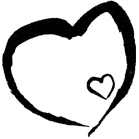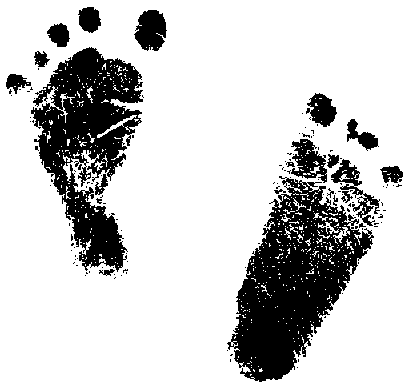Signs for concern
Babies are amazingly resilient, yet early stressors and impacts of birth can greatly affect their basic activities and functions. Gentle bodywork at the beginning can restore good alignment in your baby’s body and help them settle into easy rhythms.
Each baby is affected differently by birth’s intensity and any difficult experiences. It’s best not to wait and see if they grow out of any concerning signs.
- Unusual shape of head or ears
- Heavy bruising
- Dislikes touch, especially on head, neck, or shoulders
- Red marks on head
- Tight fist pressing repeatedly on head
- Clawing at eyes and face
- One eye appears different than the other
- Goopy eyes
- Congested or noisy breathing
- Arches back strongly
- Unusual or uneven movement of head, arms, legs
- Head tends to tilt or turn to one side
- Stiff legs or arms
- Limp baby who is hard to wake
- Does not make eye contact
- Startles very frequently
- Inconsolable crying
- Frequent, distressing hiccups
- Reflux
- Distressing gas
- Infrequent bowel movements
- Dislikes tummy time
Unusual shape of head or ears
Babies’ heads undergo compression forces in birth that can result in uneven head, nose and ear shapes. These are clues of poor alignment of bones; a setup for ear and sinus infections and more. Is your baby’s head flat anywhere? Is it still coned or uneven after the first 3 days?
Heavy bruising
In long, intense births, some babies will emerge with heavy bruising that can affect breastfeeding and breathing. Is your baby comfortable and relaxed in her body?
Dislikes touch, especially on head, neck or shoulders
Your baby needs touch for healthy development and bonding. If he dislikes contact anywhere on his body, we understand that something is off. Offer help for your baby to connect with you and to receive his natural sensory experiences.
Red marks on head
Red marks on the face or anywhere on the head show compression forces at birth. If your baby has been extracted with vacuum or forceps, or pulled out during a C-section, red marks may be visible.
Tight fist pressing repeatedly on head or clawing at eyes & face
Is your baby pressing on her head repeatedly, in one or more areas? Is she pressing with white knuckle fists? Is baby upset when they do this? Does your baby frequently scratch herself on the face and eyes?
One eye appears different than the other
Does one eye appear smaller than the other? Does one eye close sooner than the other? Especially when baby is tired or fussy? Is one eye higher than the other?
Goopy eyes
Does your baby have persistent discharge or goopiness in the corner of her eye? Clogged tear duct? With or without inflammation?
Congested or noisy breathing
If your baby’s breathing usually sounds congested or noisy, her nasal passages may be restricted. Do you notice bruising or red marks around his eyes? These are all setups for congestion and sinus infections. During the newborn days is the easiest time to open these passages.
Arches back strongly
Does your baby strongly arch back? Has your baby practically done a backflip out of your arms? Imbalanced tone is a setup for future postural and developmental issues if not sorted out early.
Unusual or uneven movement of head, arms, legs
In the first year normal babies’ movements are equal from side to side. Is your baby’s head tilted to one side? Does your baby always look in the same direction when placed on her back or in the car seat? Is one arm clutched in? Is one shoulder higher than the other?
Very tense or very limp
Is your baby rigid and tense? Are legs or arms often held stiffly? Or is your baby limp and hard to wake? Either way, these babies need help as early as possible.
Does not make eye contact
Your newborn naturally sleeps a lot. When he is awake, eye contact is a sign of healthy development. In mutual eye gazing, you and your baby fall in love. Your enchantment with each other is essential for bonding, development of the visual system and emotional intelligence.
Startles very frequently
Does your baby frequently startle, in spite of careful handling? Do you feel like your baby is like a deer in the headlights, unable to handle everyday stimuli? They may have a hard time processing sensory information. Get help early for ease now and to enable your baby’s adaptability and capacity for learning.
Frequent, persistent hiccups
When your baby gets hiccups, are they over quickly? Or do hiccups go on and on….. until your baby is bothered? This reflects a respiratory diaphragm restriction, which can affect breathing.
Dislikes tummy time
Tummy time is an essential developmental movement from the first days of life, and underlies many future activities that develop the brain and body. If your baby dislikes tummy time, or is only able to do it for a few minutes, you can learn simple activities to help him.
Inconsolable crying, tummy troubles & difficulty sleeping
Follow the link for more on these common concerns.



